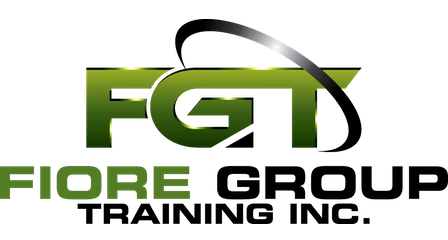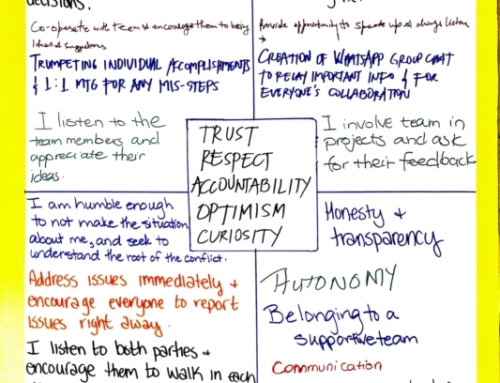Team Meetings Owned By the Team – Inspired and Interactive
Last week, I delivered a three-day modular leadership training program to over twenty municipal managers. The participants represented diverse leadership backgrounds, with varying team sizes and levels of supervisory experience.
During the training sessions, managers frequently discussed the challenge of creating meaningful team meeting engagement. Many struggled with strategies for effectively activating and involving their team members during collective gatherings, making these opportunities more productive and impactful.
Activation not Obligation
Team meetings are not mere obligations but strategic opportunities for team activation. Effective leaders transform these gatherings into collaborative spaces that unlock collective potential by ensuring every team member is fully present, engaged, and actively participating.
So how do you get there? How do you shift team meetings from passive to powerful?
Most meetings are routine, predictable, and passive. Most people show up in body but not in mind.
But what if your meetings were irresistible? What if they felt like a creative workshop, not a status update? What if they energized your team instead of draining them?
Unconventional Strategies for Your Team Meetings
Here are several unconventional strategies for keeping your team fully present, engaged, and (hopefully) excited to contribute.
The “Hot Seat” Icebreaker—Instant Ownership
Before the meeting, assign a rotating team member to kick things off with personal or professional insight related to the topic. It could be a challenge they recently overcame, a bold idea, or an unconventional strategy they’d like to discuss.
You create an immediate buy-in and set the tone for a meeting where voices are valued.
Suggestion: Rotate the “Hot Seat” role each meeting to ensure everyone gets their moment to shine.
Silent Brainstorming—Engaging the Thinkers
Some of the best ideas never get shared because louder voices dominate the room. Break this pattern with a silent brainstorming session in which team members write their thoughts before the discussion begins.
- Use a shared digital whiteboard (like Miro) or sticky notes on a physical wall.
- Let people reflect and contribute without pressure.
- Facilitate the discussion by ensuring every team member’s voice is heard, not just the most vocal participants.
Suggestion: This technique is excellent for diverse teams where introverts may feel overshadowed in traditional discussions.
The “Stand & Speak” Technique
Want to eliminate monotony? Change body language.
Instead of sitting, have team members stand up when they present an idea.
It does two things:
- Boosts energy & confidence—standing activates the brain differently.
- Commands attention—people listen more intently.
It’s a simple shift that makes a huge impact.
The Five-Word Rule
When discussions get stale, enforce the “five-word rule.”
Challenge the team: “Explain your idea in five words.”
It forces clarity. It cuts out fluff. It makes people rethink how they communicate.
And it keeps everyone on the edge of their seat, waiting for the next crisp, punchy idea.
Energy Check-Ins (With a Twist)
Instead of the usual “How’s everyone doing?” check-ins, ask:
- “If this meeting were a movie, what genre would it be?”
- “What’s the soundtrack of our team right now?
- If this project were a weather forecast, what would it be?”
People loosen up; responses spark curiosity, and as an s result, engagement skyrockets.
The “Meeting Trailer” Teaser
People check out when they don’t know why a meeting matters.
Instead of sending a dull agenda, try a meeting trailer. It’s a short, punchy message that builds anticipation:
Example:
“In tomorrow’s meeting, we’re tackling a challenge that could change our work forever. Bring your boldest idea—because we’re not leaving without a game plan.”
You have energy, curiosity, and expectation before they enter the room!
“What’s Your Boldest Idea?” Challenge
Create an environment where big, unconventional thinking in your team meetings is the norm. Once per meeting, challenge each member to share a bold, outside-the-box idea that could revolutionize the team’s workflow, creativity, or success. No idea is too wild.
- Instead of reacting immediately with feedback, the team must explore making it work before considering limitations.
- Together, your team will foster innovation, psychological safety, and trust.
Bonus: Keep a “Bold Idea Log“ and revisit it periodically—you might uncover your next big breakthrough!
“Meeting After the Meeting” — The Reflection Round
End each meeting with a fast-paced, high-energy reflection round where every member shares:
- One key takeaway
- One thing they’ll implement immediately
- One lingering question or curiosity
You reinforce learning, ensure actionable takeaways, and keep the momentum alive.
I routinely do this at the end of every workshop. I check in with participants and ask them to share one thing that resonated with them from the training session and one actionable step they will take from attending.
The “Meeting Aftershock” Rule
Most meetings end and get forgotten.
But what if your meeting had an aftershock?
- Assign a Meeting Aftershock Captain—someone who follows up 24 hours later.
- Their role: Ask one unexpected follow-up question in the team chat.
Example:
“After sleeping on it, what’s the one thing we missed?”
“What’s an opposite perspective we didn’t consider?”
Momentum remains alive and prevents great ideas from fading.
The Key to Full Engagement? Make It Theirs!
Meetings should feel like a collaborative experience, not a corporate chore.
In our leadership workshops, we introduce the idea (and the power) of the Endowment Effect. When people contribute to helping build and develop something, they are much more likely to value it. These ideas will work because the meeting is theirs, not yours.
When people feel ownership, and like their voice matters, they stop attending meetings and start showing up.






